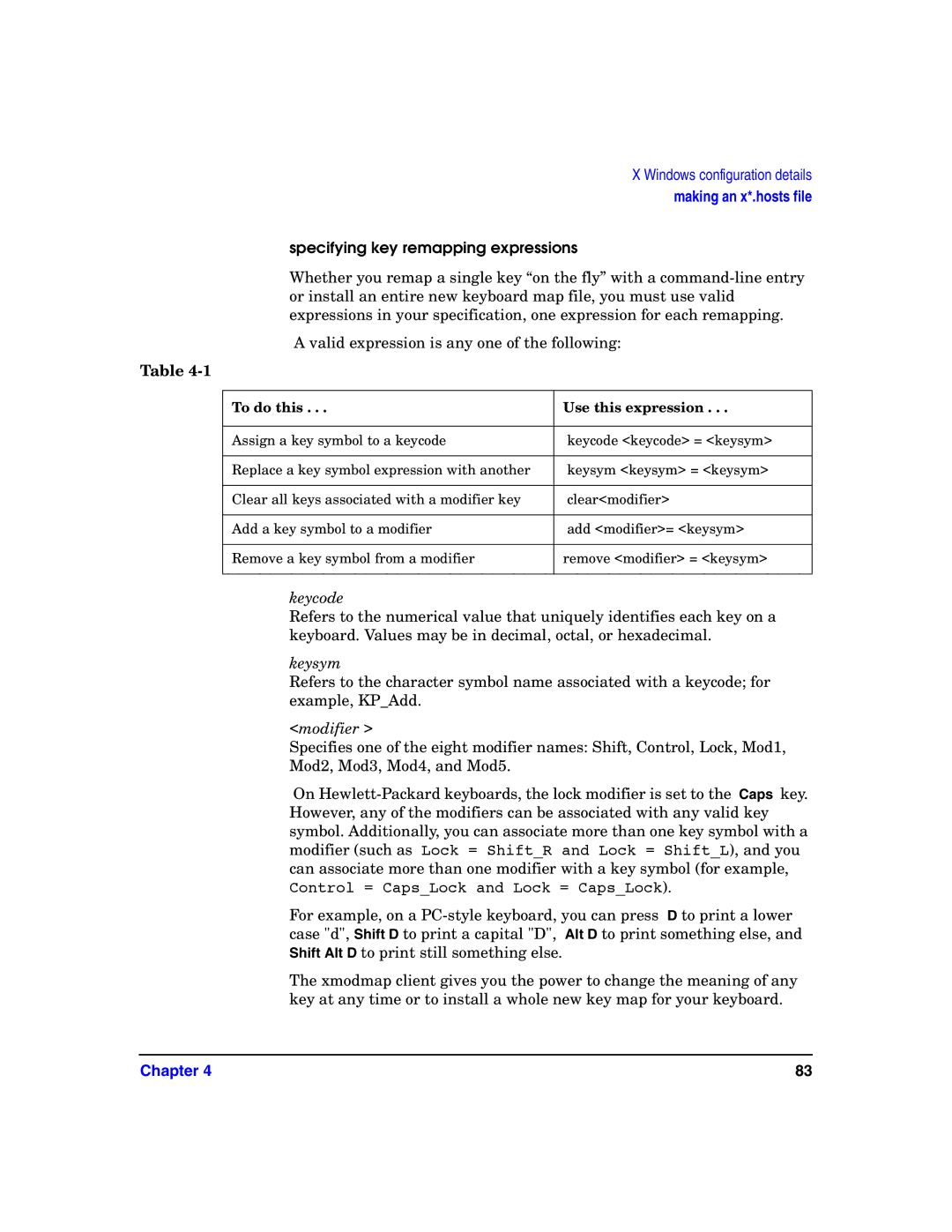X Windows configuration details
making an x*.hosts file
specifying key remapping expressions
Whether you remap a single key “on the fly” with a
A valid expression is any one of the following:
Table
To do this . . . | Use this expression . . . |
|
|
Assign a key symbol to a keycode | keycode <keycode> = <keysym> |
|
|
Replace a key symbol expression with another | keysym <keysym> = <keysym> |
|
|
Clear all keys associated with a modifier key | clear<modifier> |
|
|
Add a key symbol to a modifier | add <modifier>= <keysym> |
|
|
Remove a key symbol from a modifier | remove <modifier> = <keysym> |
|
|
keycode
Refers to the numerical value that uniquely identifies each key on a keyboard. Values may be in decimal, octal, or hexadecimal.
keysym
Refers to the character symbol name associated with a keycode; for example, KP_Add.
<modifier >
Specifies one of the eight modifier names: Shift, Control, Lock, Mod1,
Mod2, Mod3, Mod4, and Mod5.
On
For example, on a
The xmodmap client gives you the power to change the meaning of any key at any time or to install a whole new key map for your keyboard.
Chapter 4 | 83 |
